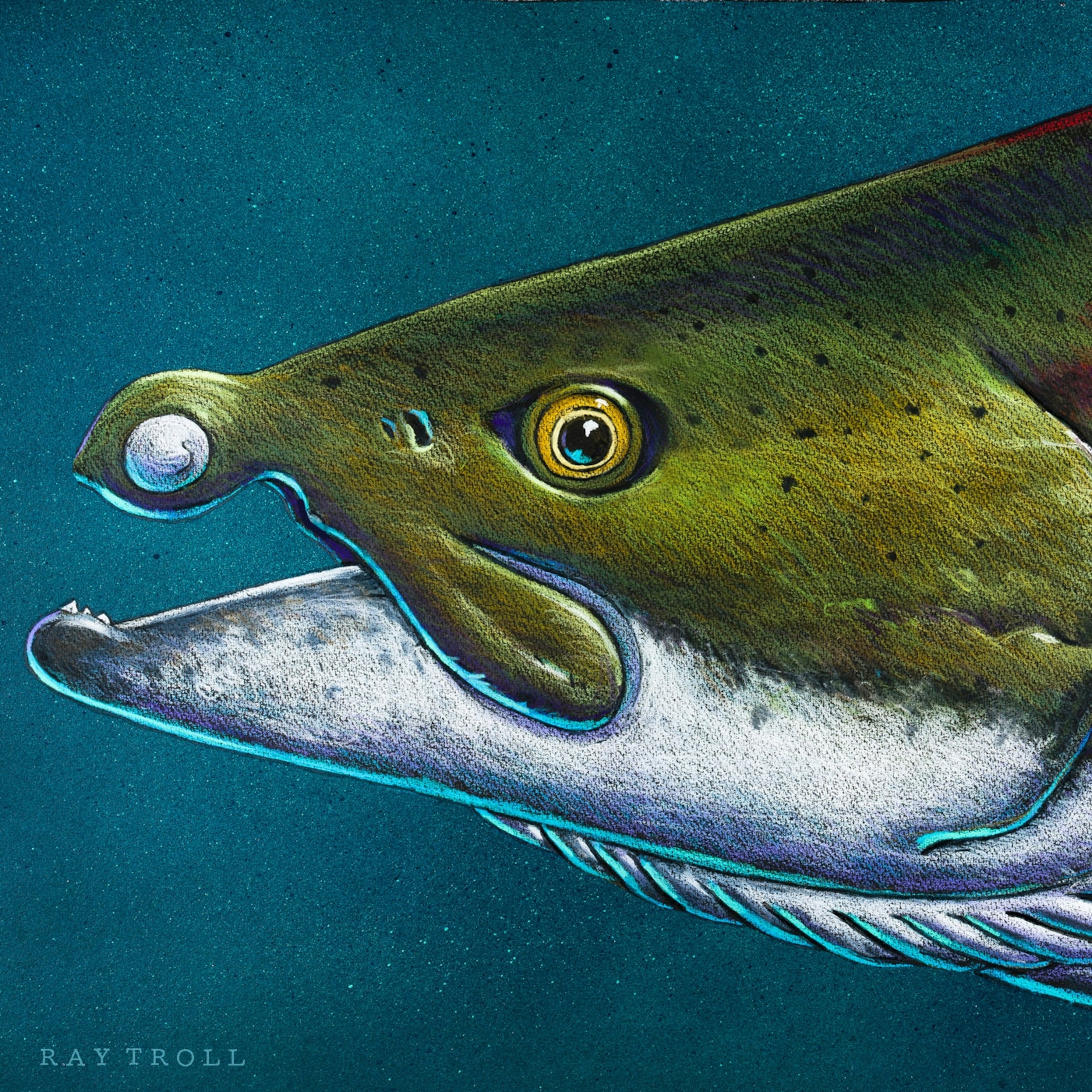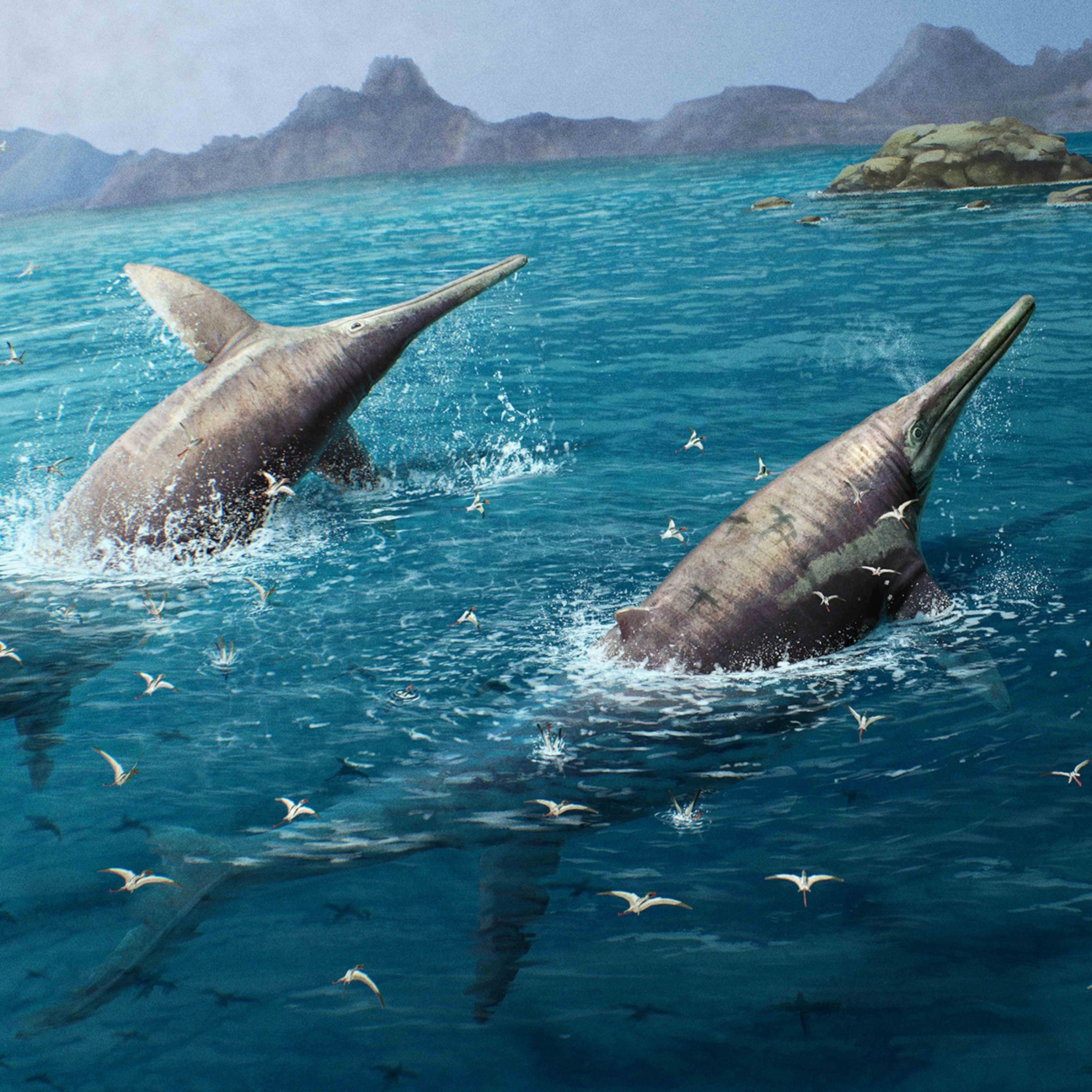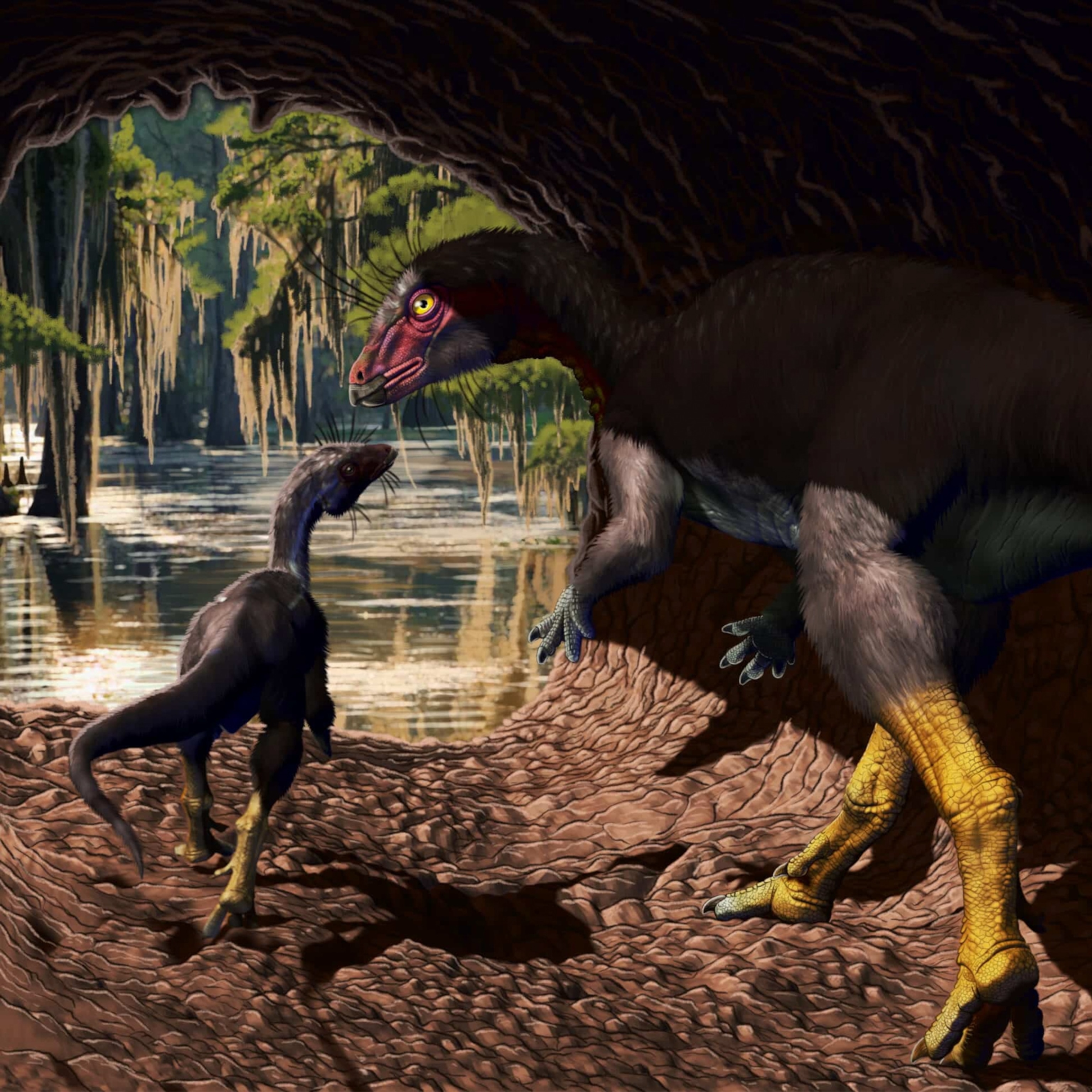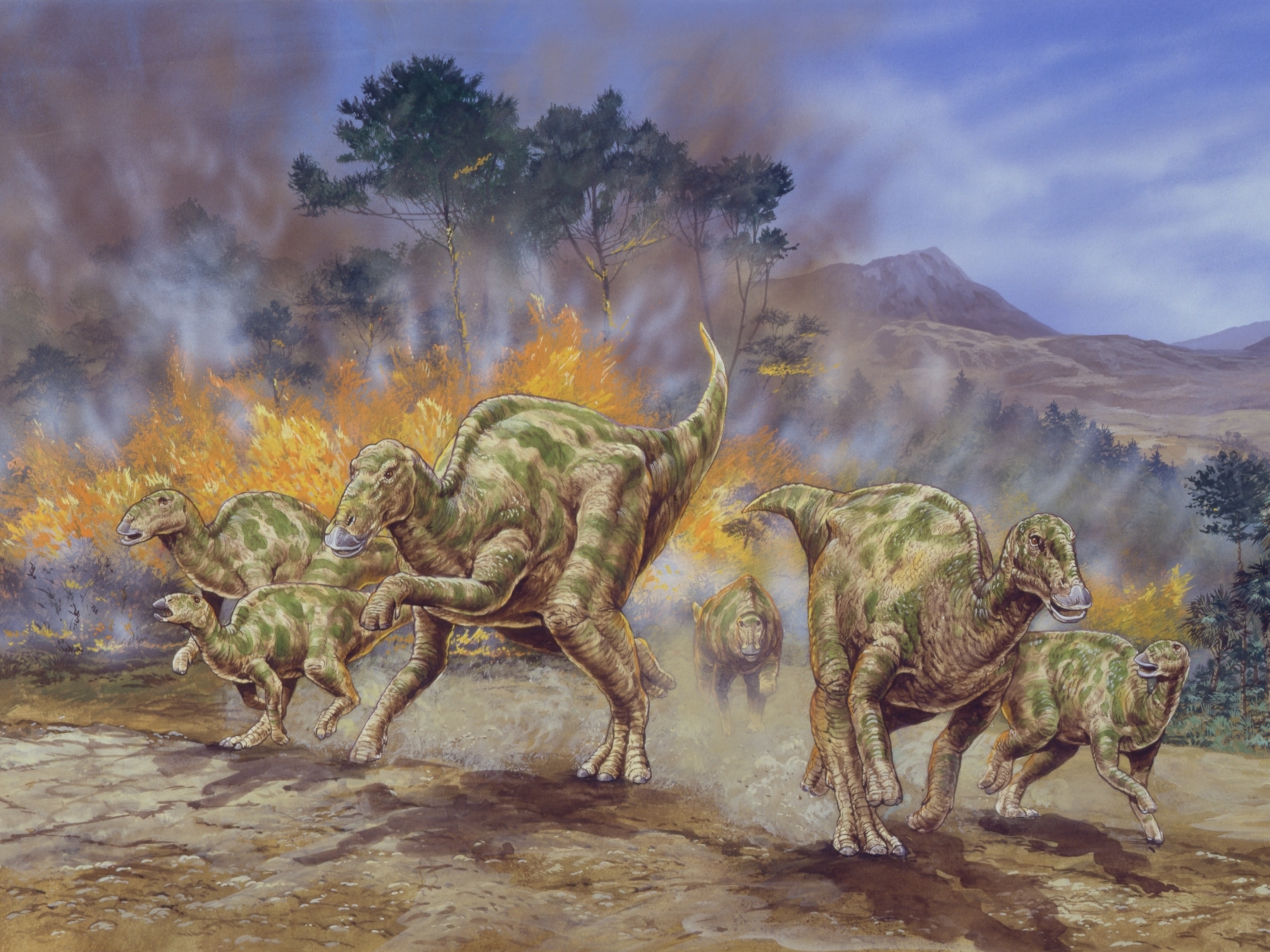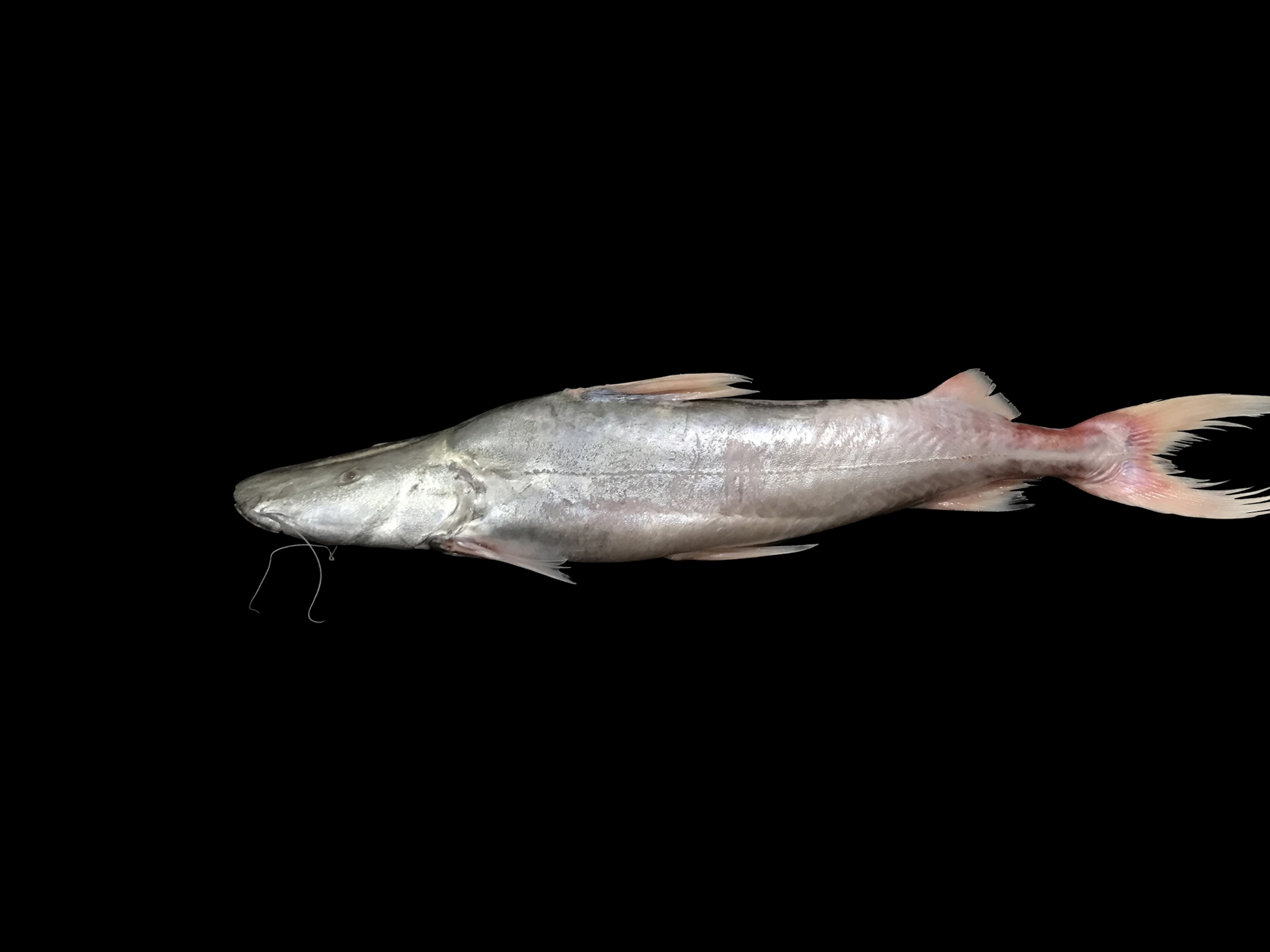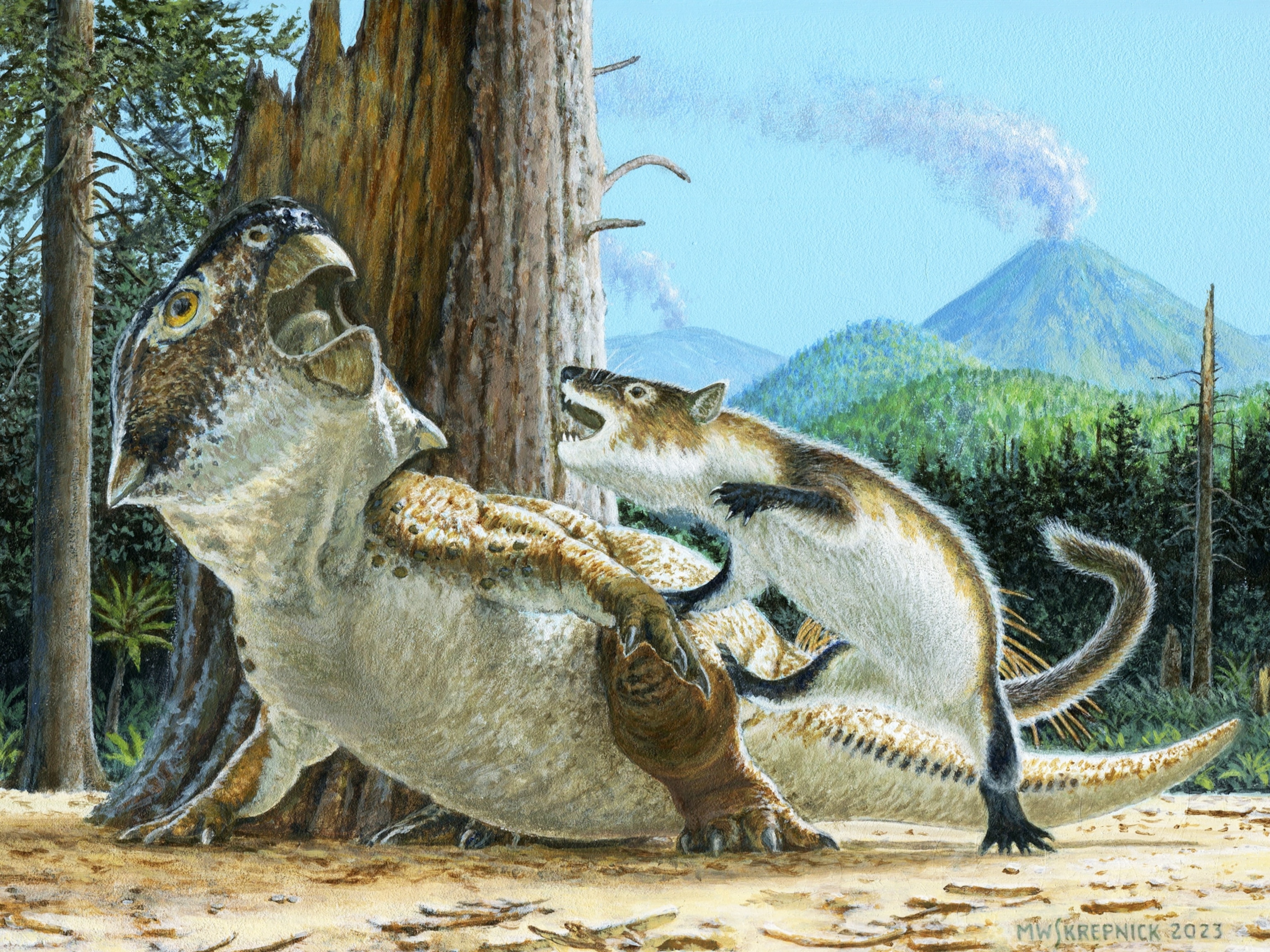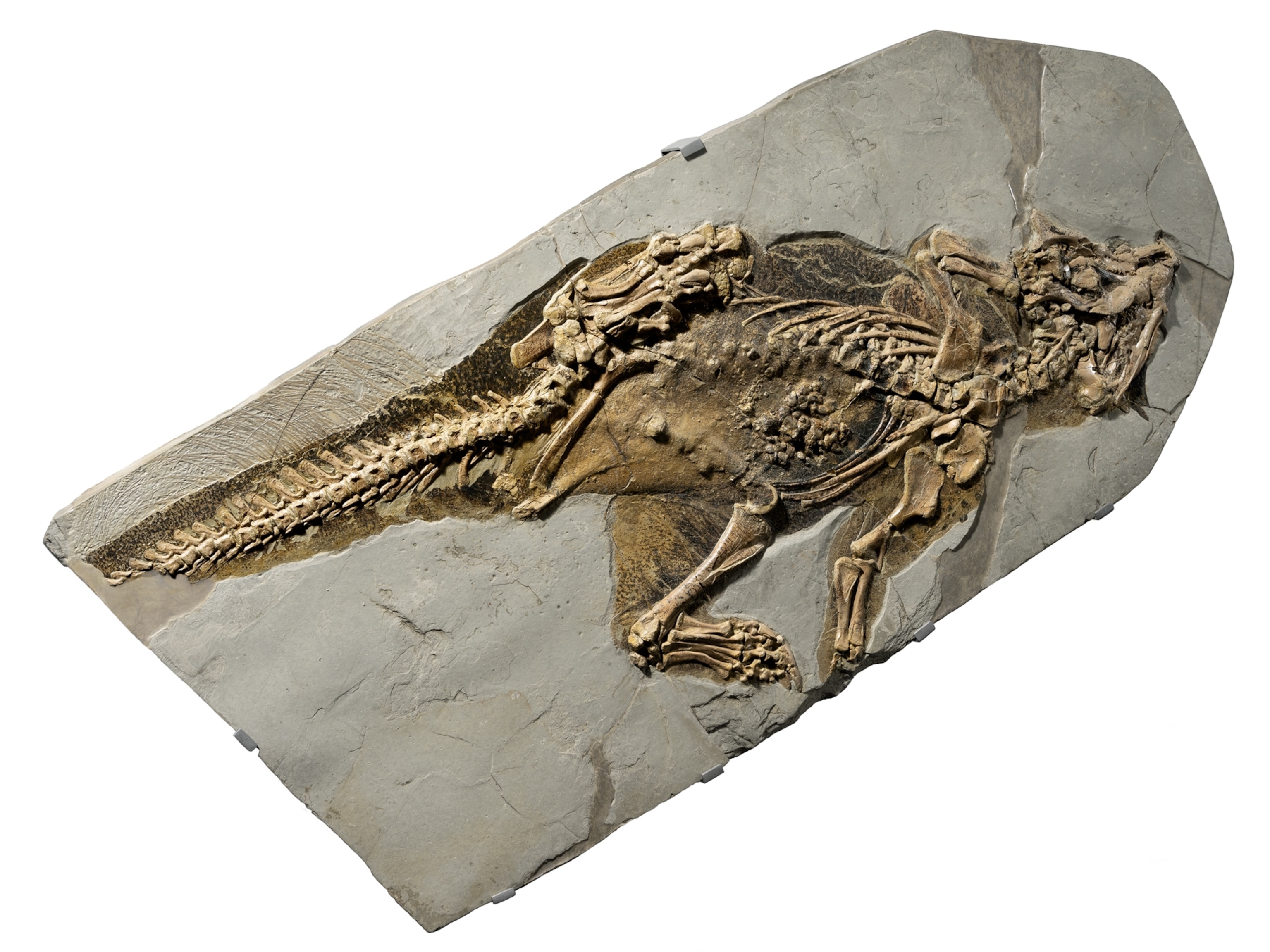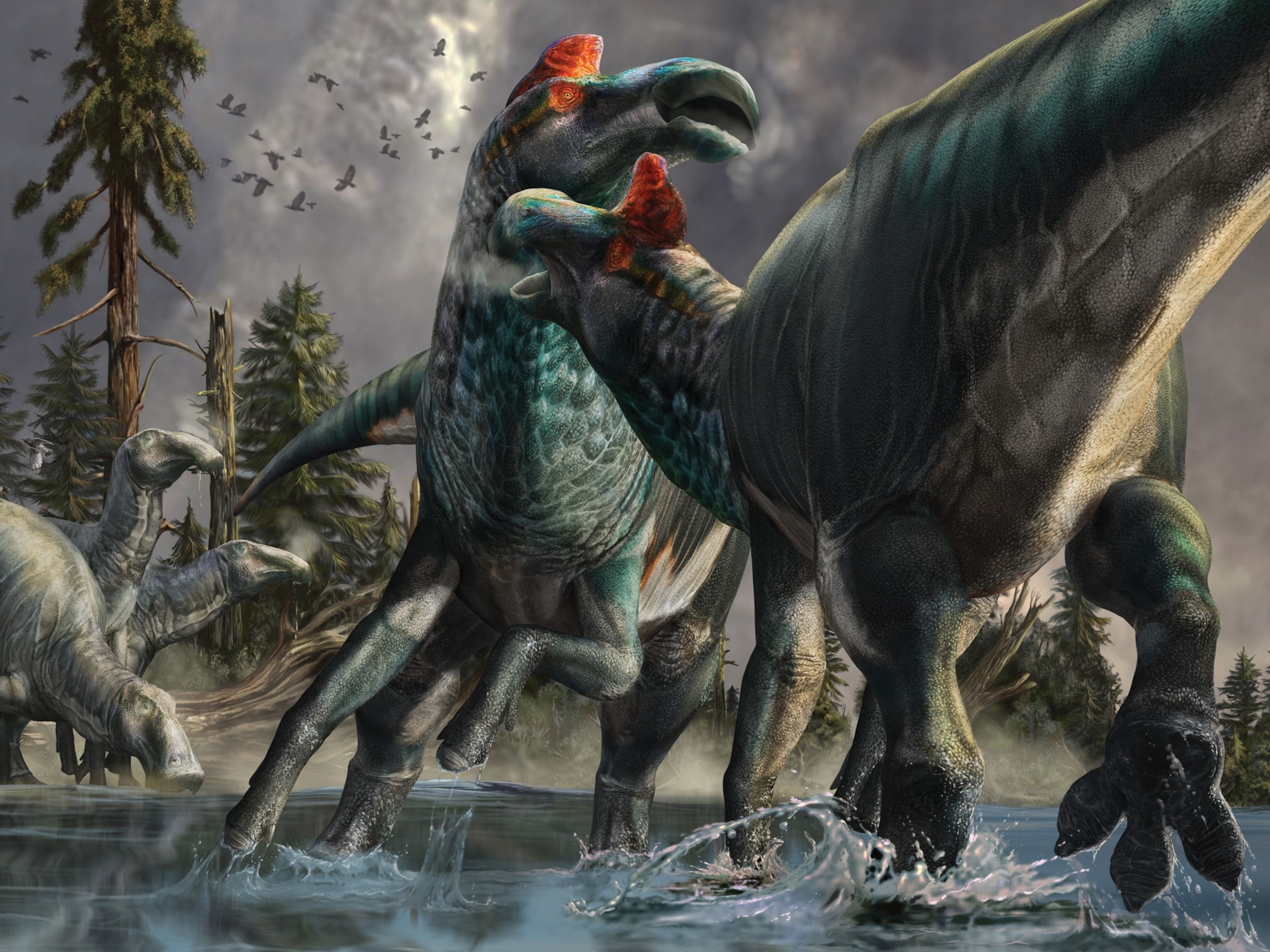How to bring a 75-foot-long dinosaur back to life
A team of scientists and artists transformed a jumble of bones entombed in tons of rock into a towering dinosaur that will leave visitors to L.A.'s Natural History Museum wonderstruck.
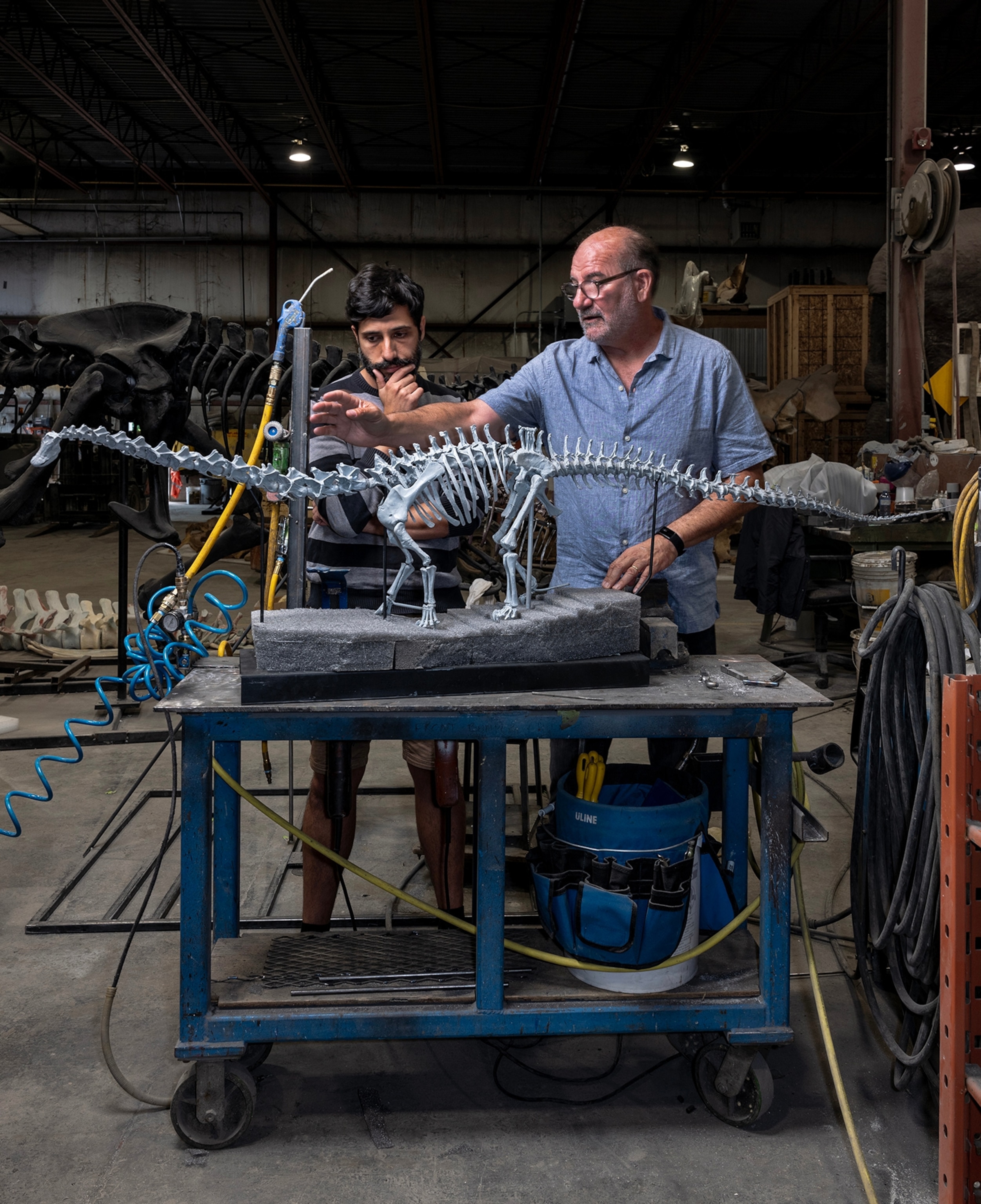
What a strange thing it must be to become a fossil. Say you live a full life for a Diplodocus dinosaur, swinging your enormously long tail across your Jurassic world for 70 or so years. Then you die—but in such extraordinary circumstances that, against all odds, your bones are buried and transformed over time into stone. Mountains rise and wear away around you. Rivers come and go. Glaciers rumble overhead. Your bones endure.
Even stranger, a hundred or more million years later, volcanic activity comes to dominate the area. When the superheated fluids eventually cool and drain away, your stony bones have become green, highlighted here and there with red patches like roasted meat.
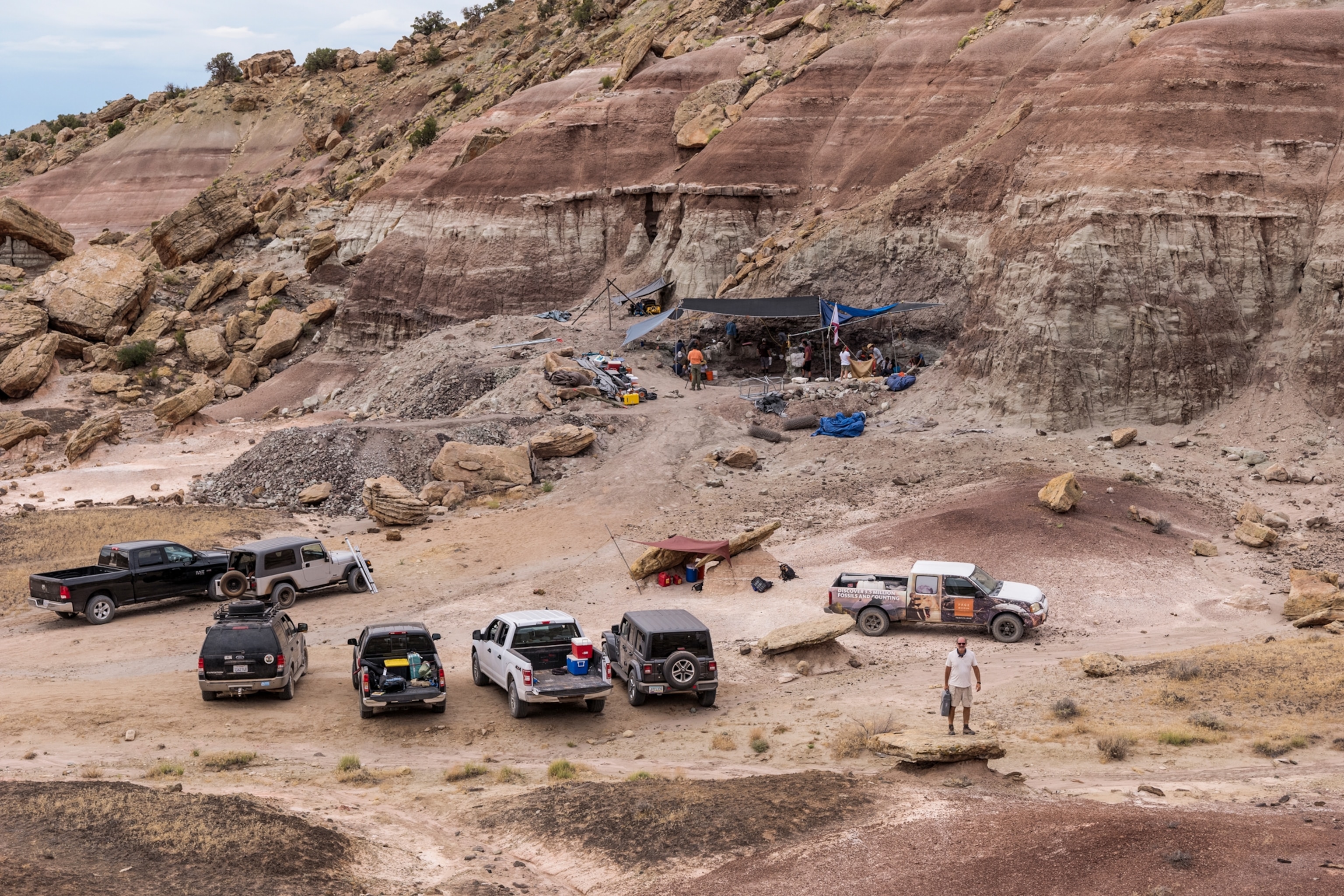
And then the strangest turn of all: You return to the surface after an absence of 150 million years, and there you’re discovered, extricated, and reassembled by some unimaginable new species in a bizarre new world.
Step 1: discover and dig
A team from the Natural History Museum of Los Angeles County (NHMLAC) first spotted the sauropod dinosaur they call Gnatalie in 2007 after erosion revealed a single leg bone beside a bluff in southeastern Utah. What they found underneath brought them back to the dig site for nine more summers. The jumble of bones—Diplodocus, Camarasaurus, Allosaurus, Stegosaurus, and others—had been swept together by the rivers of their day into a dinosaur logjam.
Even the reconstructed specimen slated to go on display at the museum this fall is not a single dinosaur but combines parts from two or more individuals of the same species found at the site. The identity of that species, which may be new to science, has yet to be determined. But with its long neck and tail and four sturdy legs, it shares many of the characteristics of the genus Diplodocus.
The nickname Gnatalie came unromantically from the tiny gnats that maddened team members the first year of excavation. They scheduled later digs for high summer, preferring the risk of dehydration and heatstroke to gnat bites.
Among other routine hazards at the dig site, mountain lions left their tracks in the dirt, and rattlesnakes sometimes sheltered under tarps. On one occasion a lightning bolt hit the top of a nearby bluff, and a lone juniper tree burst into flame. People scattered for shelter.
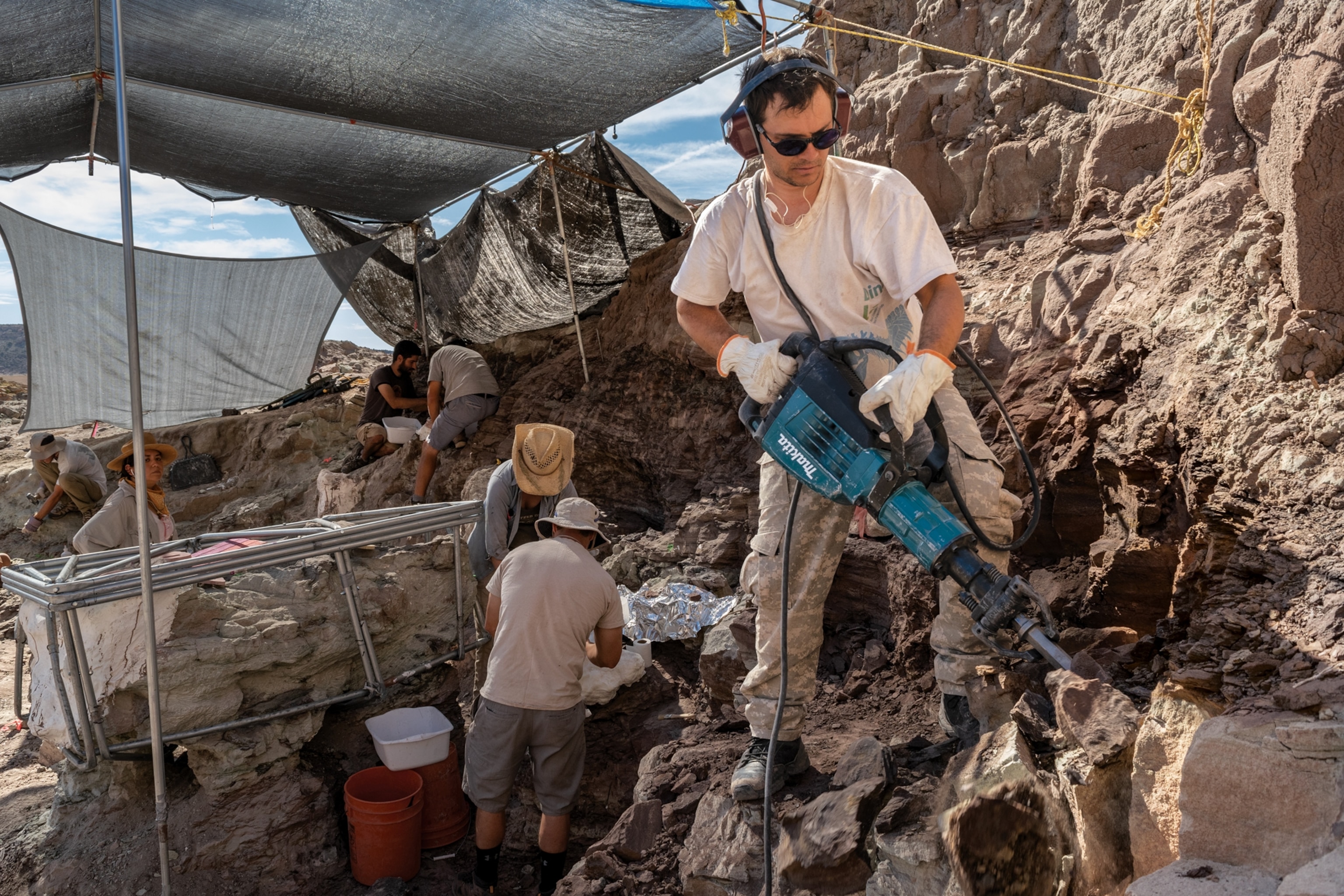
Because the site was accessible, a long day’s drive from Los Angeles, the museum team saw it as a chance to show people how dinosaur science gets done, with volunteers, donors, and students doing hammer-and-chisel work. Planning dinner one night, team members conducted a head count and realized they had 50 people in camp. For some, it was the first time they’d slept in a tent.
The abundance of specimens also complicated the dig. “You’re playing pick-up sticks with a bunch of dinosaur bones,” says NHMLAC paleontologist Alyssa Bell. “They’re all tangled and locked together.” In 2014 the team discovered what turned out to be an entire neck, back, and pelvis still fused together in stone. “I remember us just standing there scratching our heads and trying to figure out how on earth we’re gonna get all these apart,” says Bell.
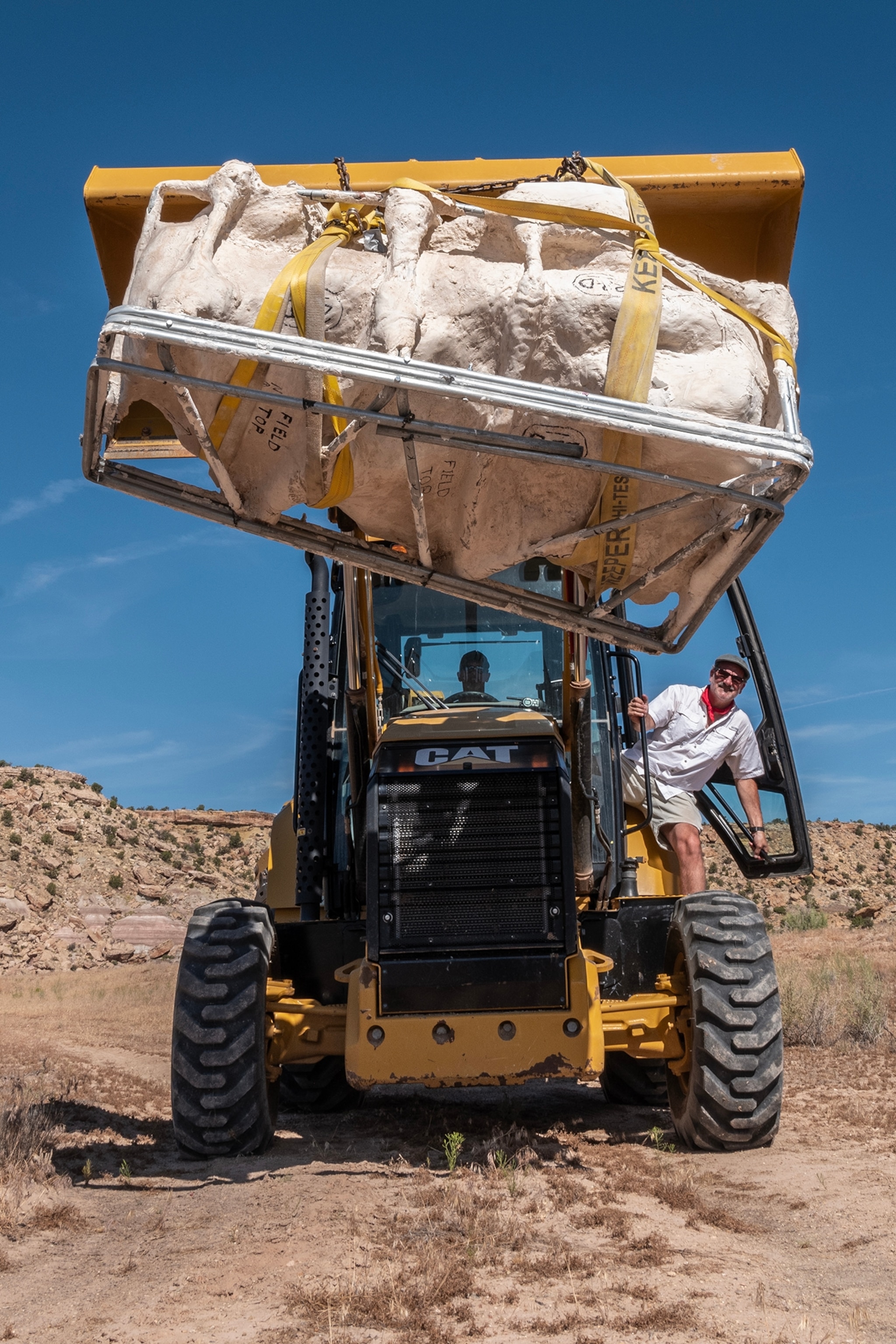
The excavation process entails trenching around blocks of stone containing the fossils and digging under them, leaving temporary pedestals for support. Jackets of burlap and plaster are placed around the fossils to protect them. At the start, the crew managed to keep the jackets at a weight the workers could lift out by hand. But they soon progressed to jackets weighing a ton or more, requiring heavy machinery for the lifting.
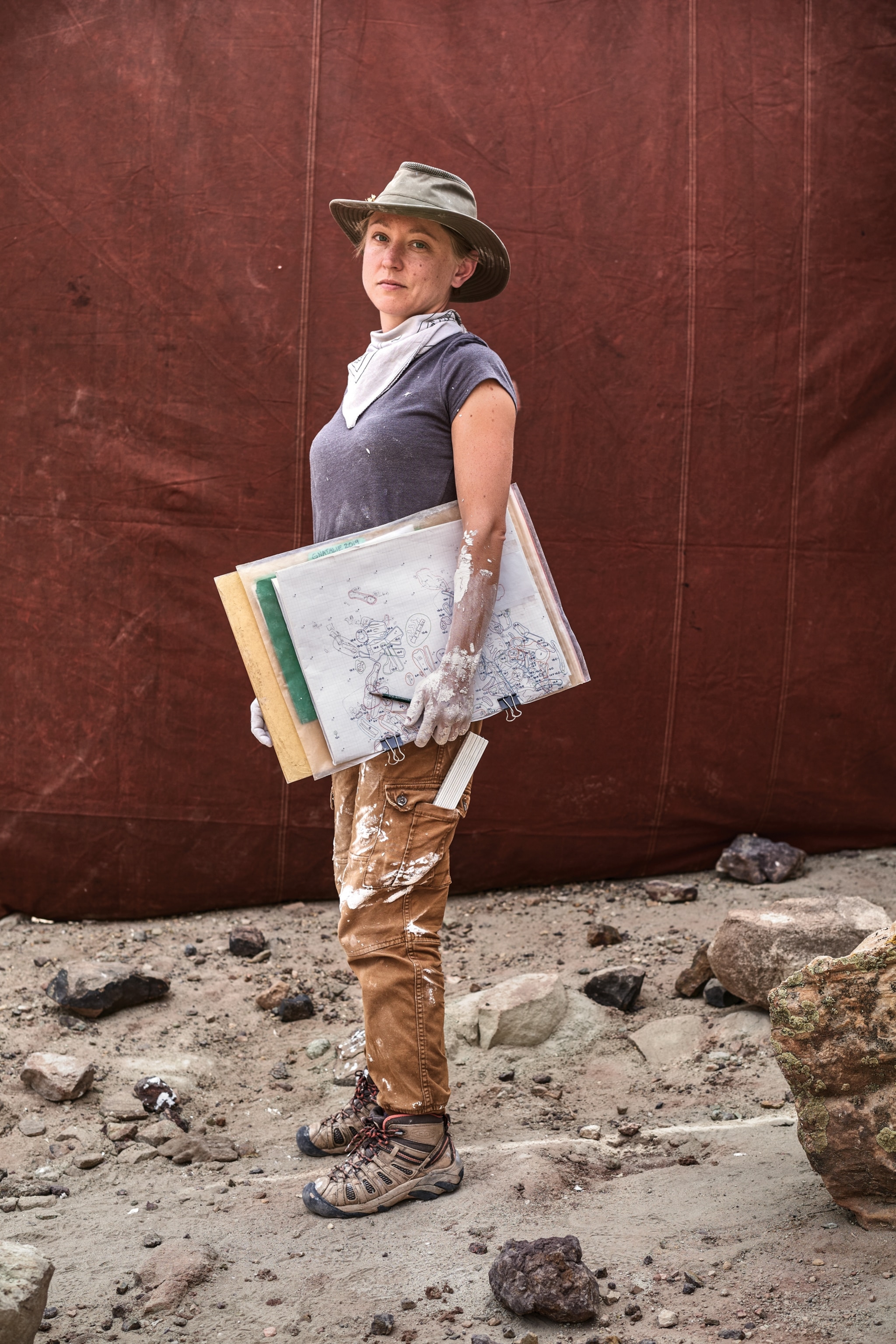
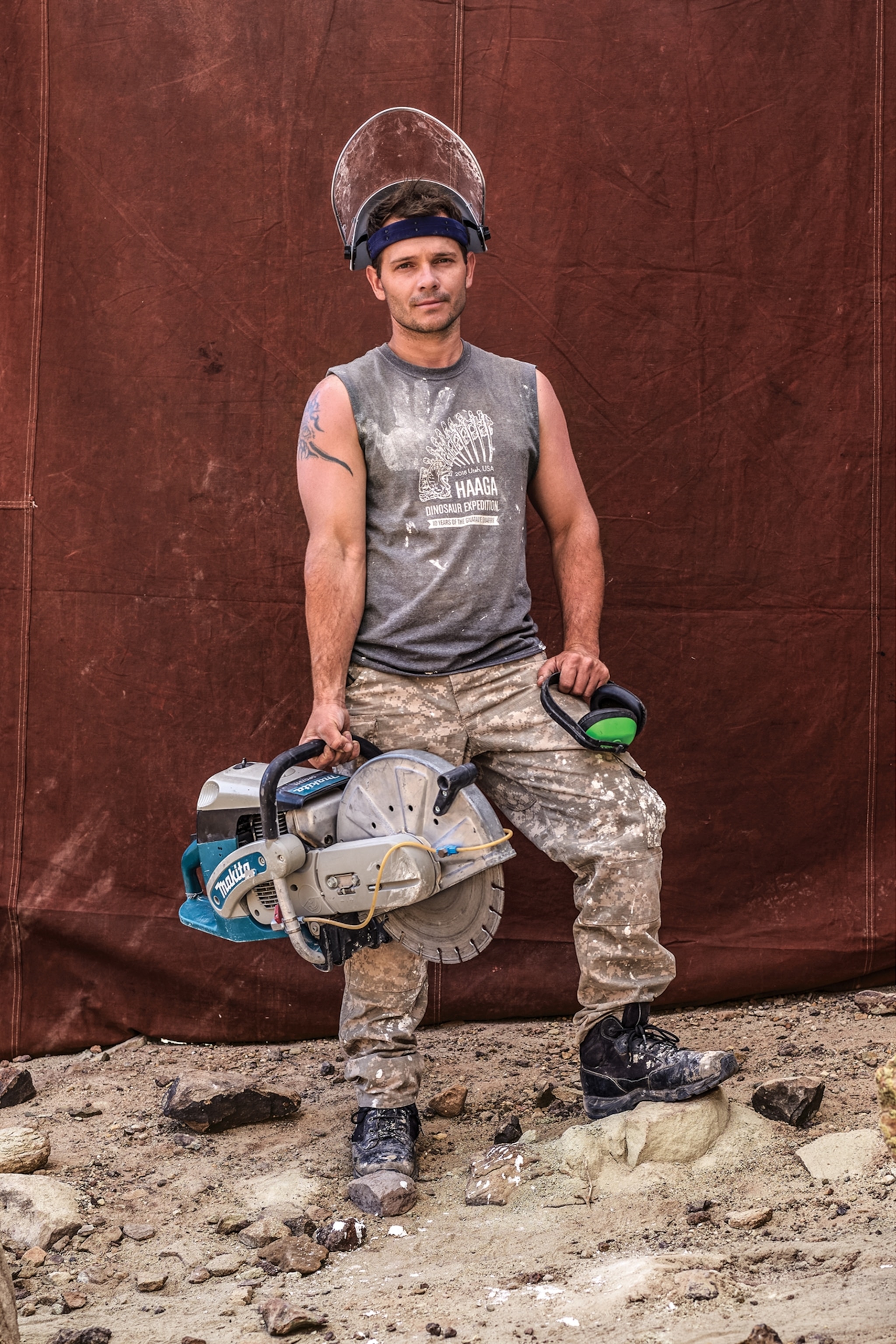
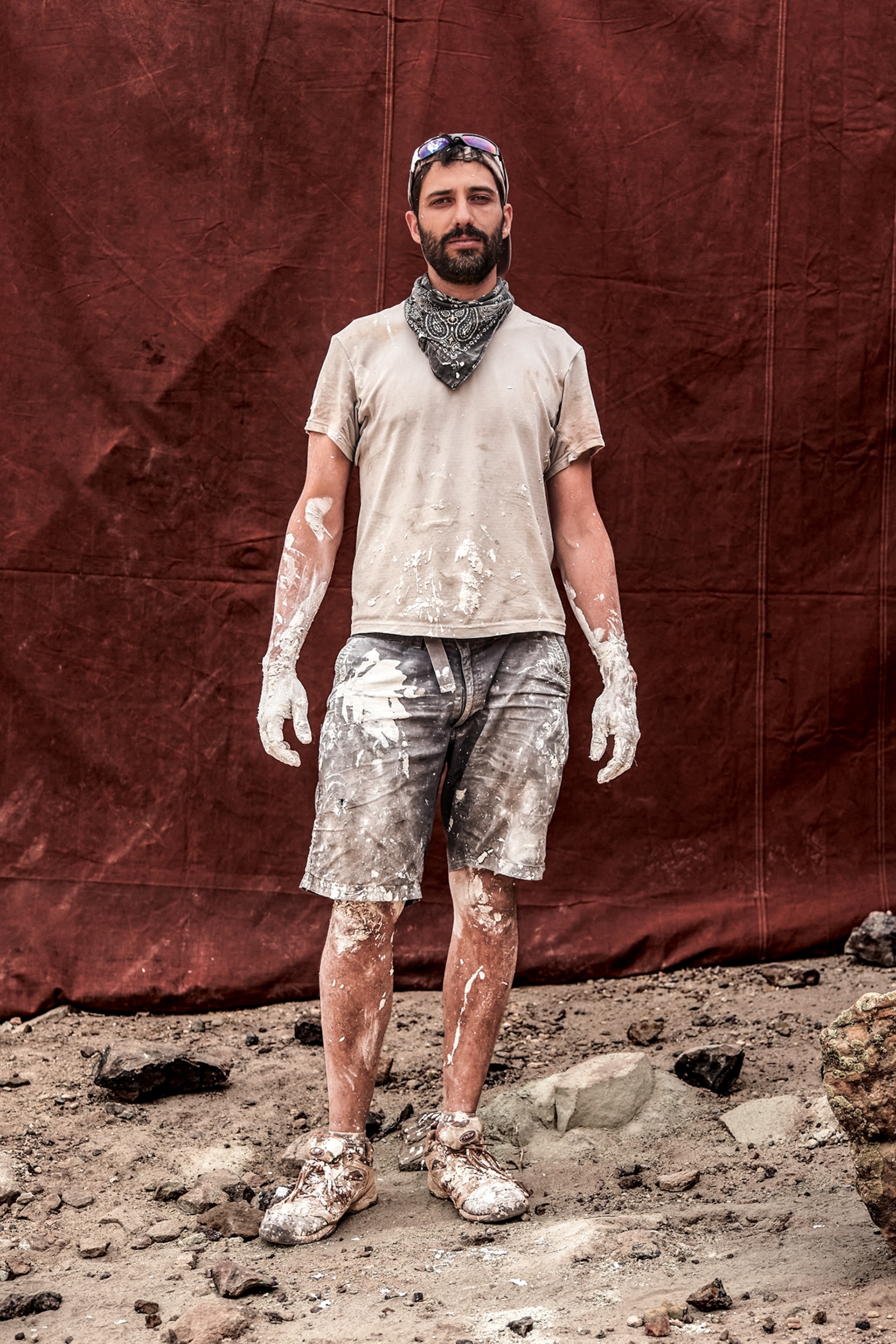
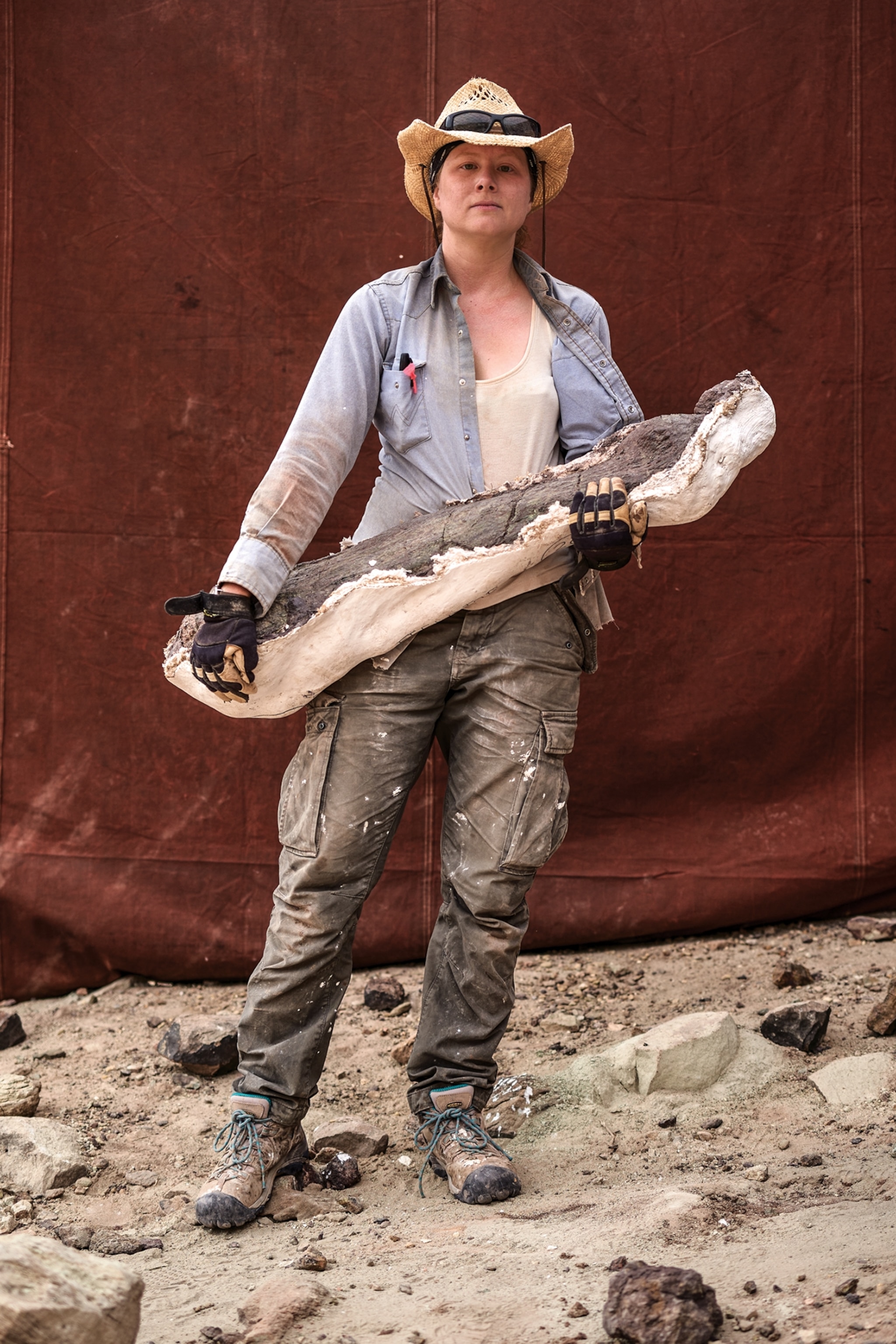

When the time came to extract a giant pelvis, “they had ropes on either side and teams of people rocking it back and forth,” says Stephanie Abramowicz, the museum illustrator at the dig. The moment it broke free, there was a crack of thunder. “It was very clear Gnatalie was speaking to us, released from the ground, ready to live another life,” says Abramowicz.
Step 2: prep bones
The next stop for bones coming out of the dig was the museum’s prep lab in Los Angeles. The fossils were challenging, says Doug Goodreau, who runs the lab, because the surrounding material was like cement. Preparators used an angle grinder to chunk away excess stone, with sparks and stone chips flying, as well as hammers, chisels, and dental tools for more delicate work. Another essential tool: an eye for the unexpected.
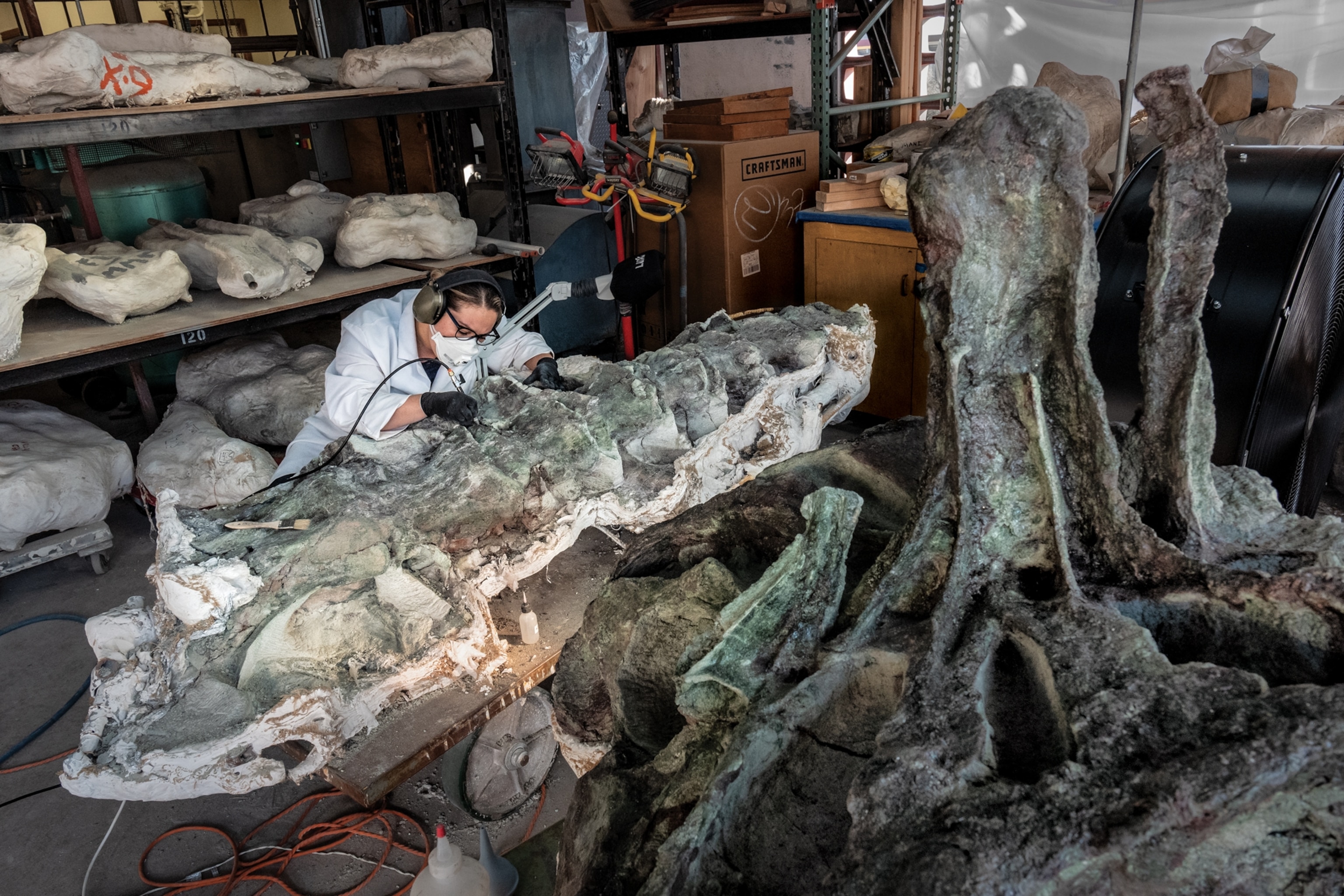
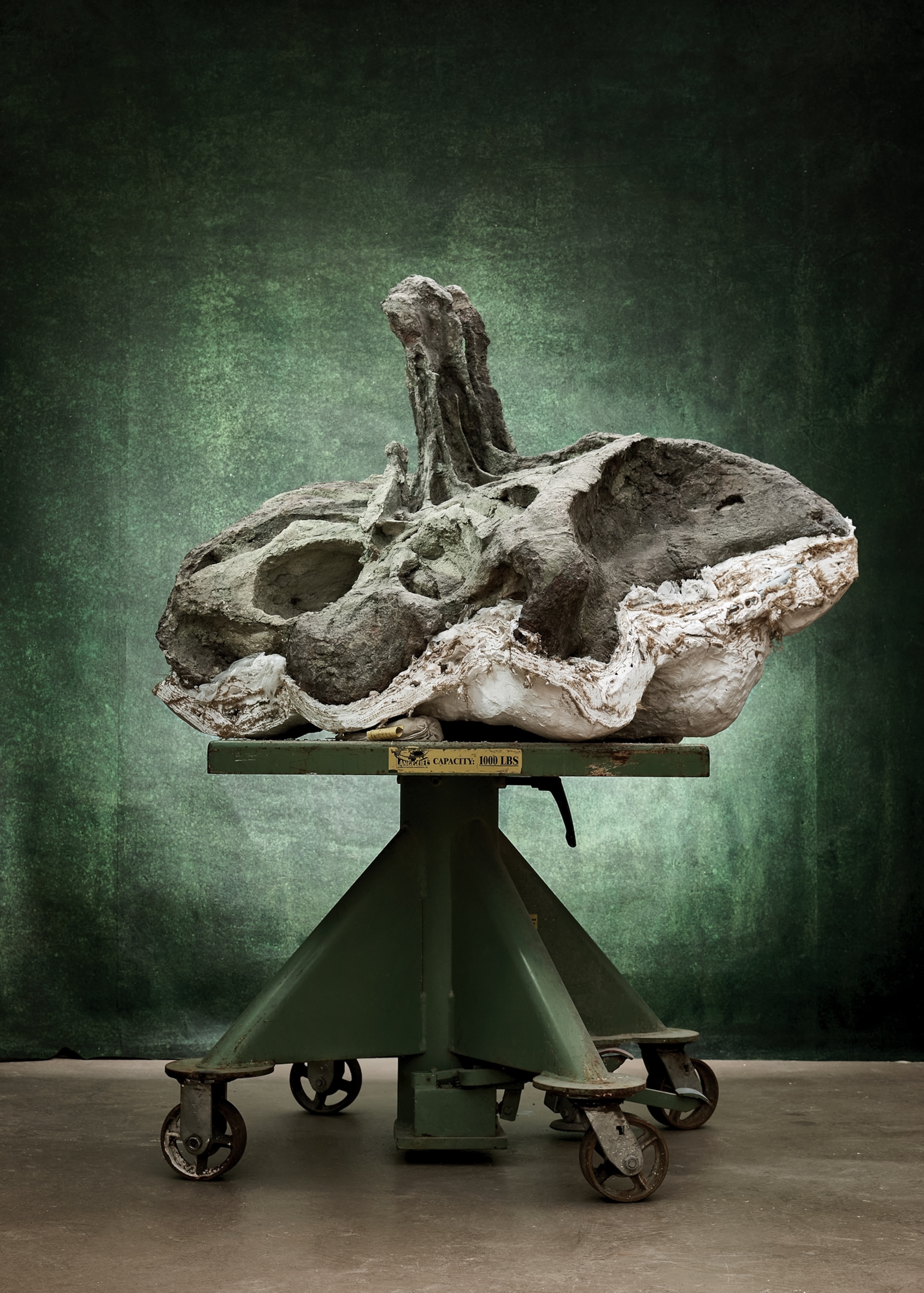
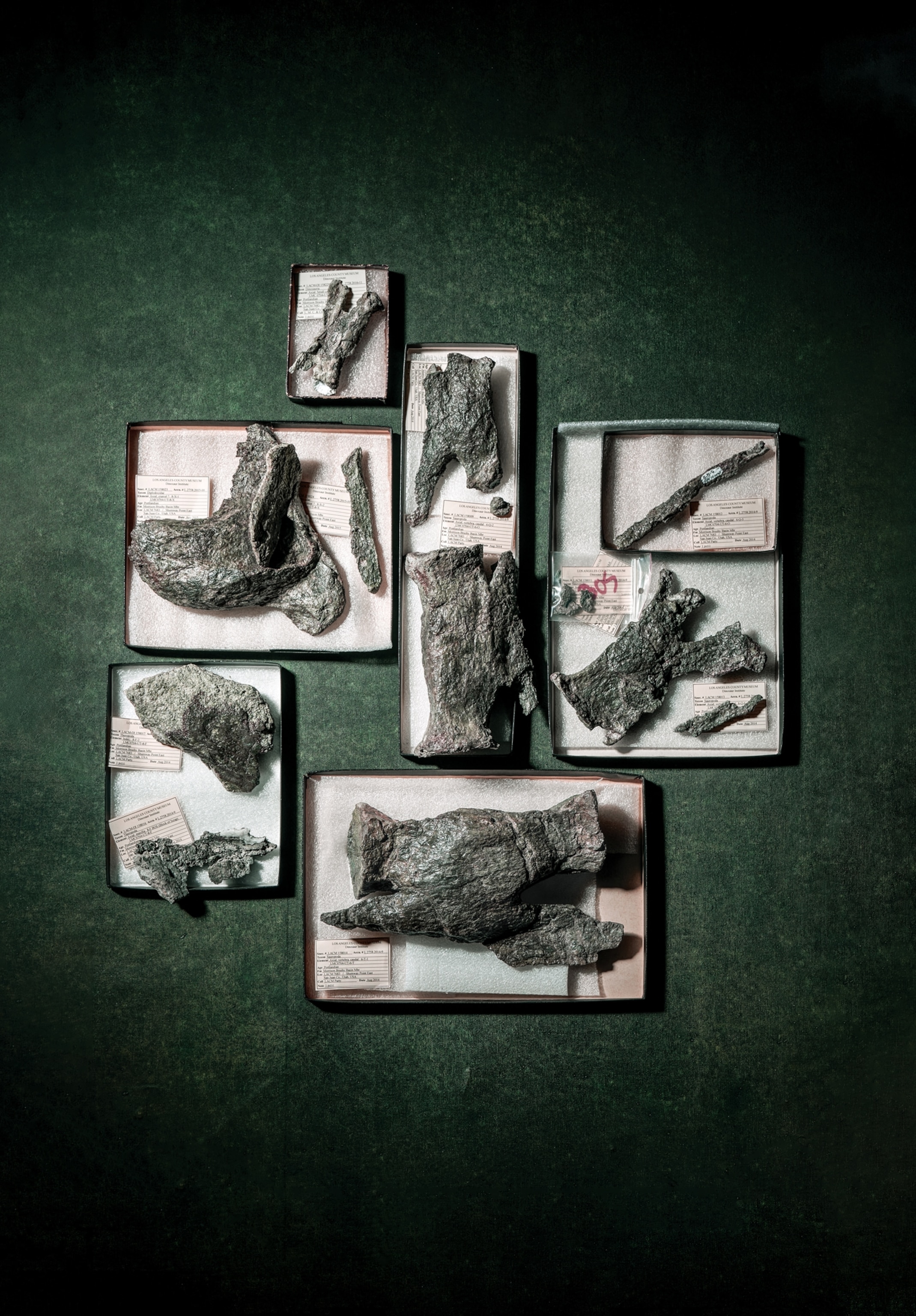
“Each jacket can be a quarry unto itself,” says Goodreau. Bones, teeth, and other bits must be patiently mined from the matrix. Work on one pelvis, and on bones discovered alongside it, took the better part of a year. As many as six preparators at a time worked to expose fine details, using miniature jackhammers called zip scribes and micro-sandblasters called air abraders. It sounded, says Goodreau, like a beehive buzzing. The last bit of prepping was to fill flaws and gaps with an epoxy putty close to the color of the bone but different enough to distinguish restored from original material.

Step 3: reconstruct skeleton
In the summer of 2023, in a small Canadian town on the north shore of Lake Ontario, 2,600 miles from the Los Angeles museum, Gnatalie’s bones lay in shallow wooden boxes in a back room at Research Casting International (RCI), a firm specializing in rebuilding dinosaurs for museums. Some bones rested on beds of foam, others on sand, each with a manila card detailing its place in the coming reconstruction.
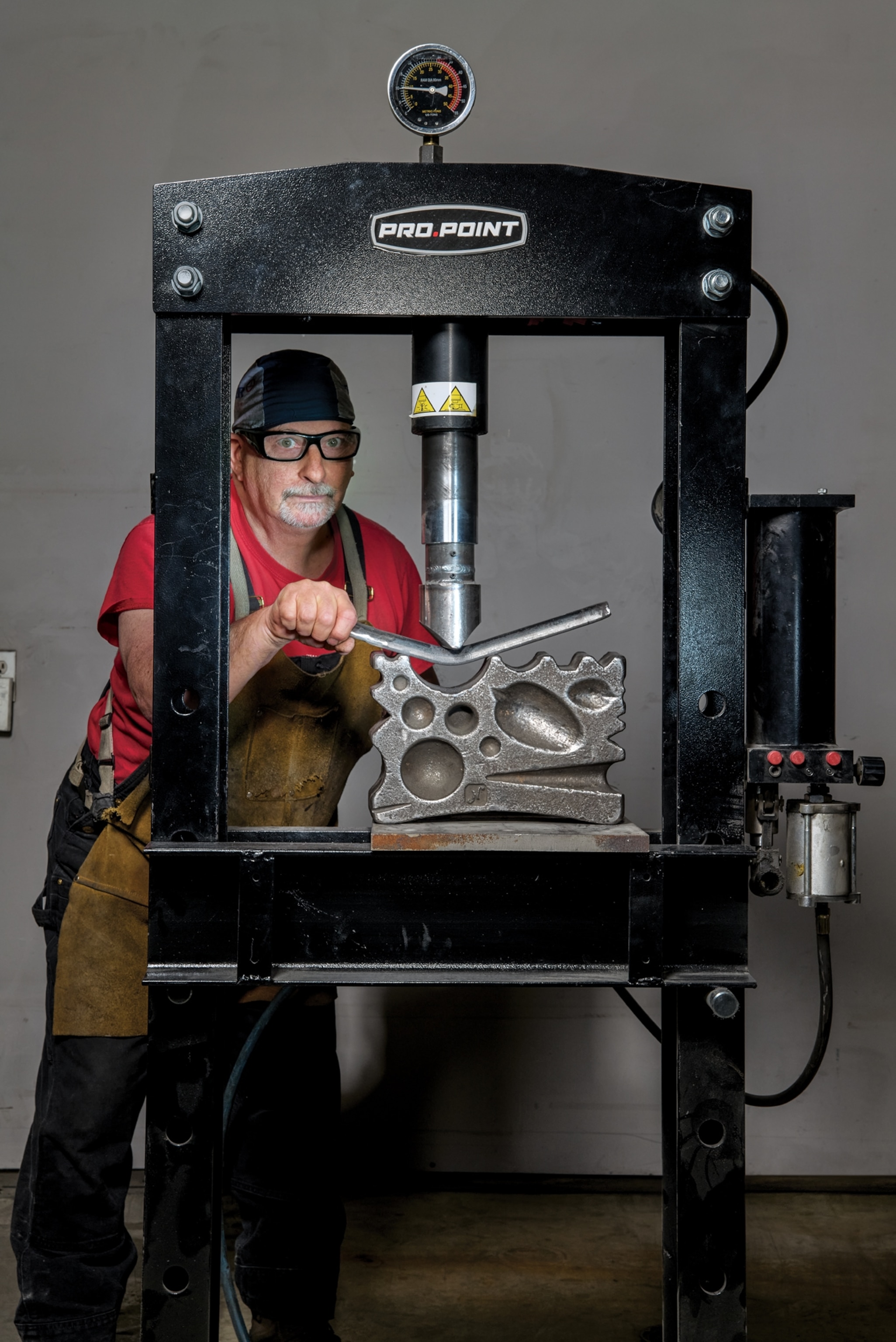
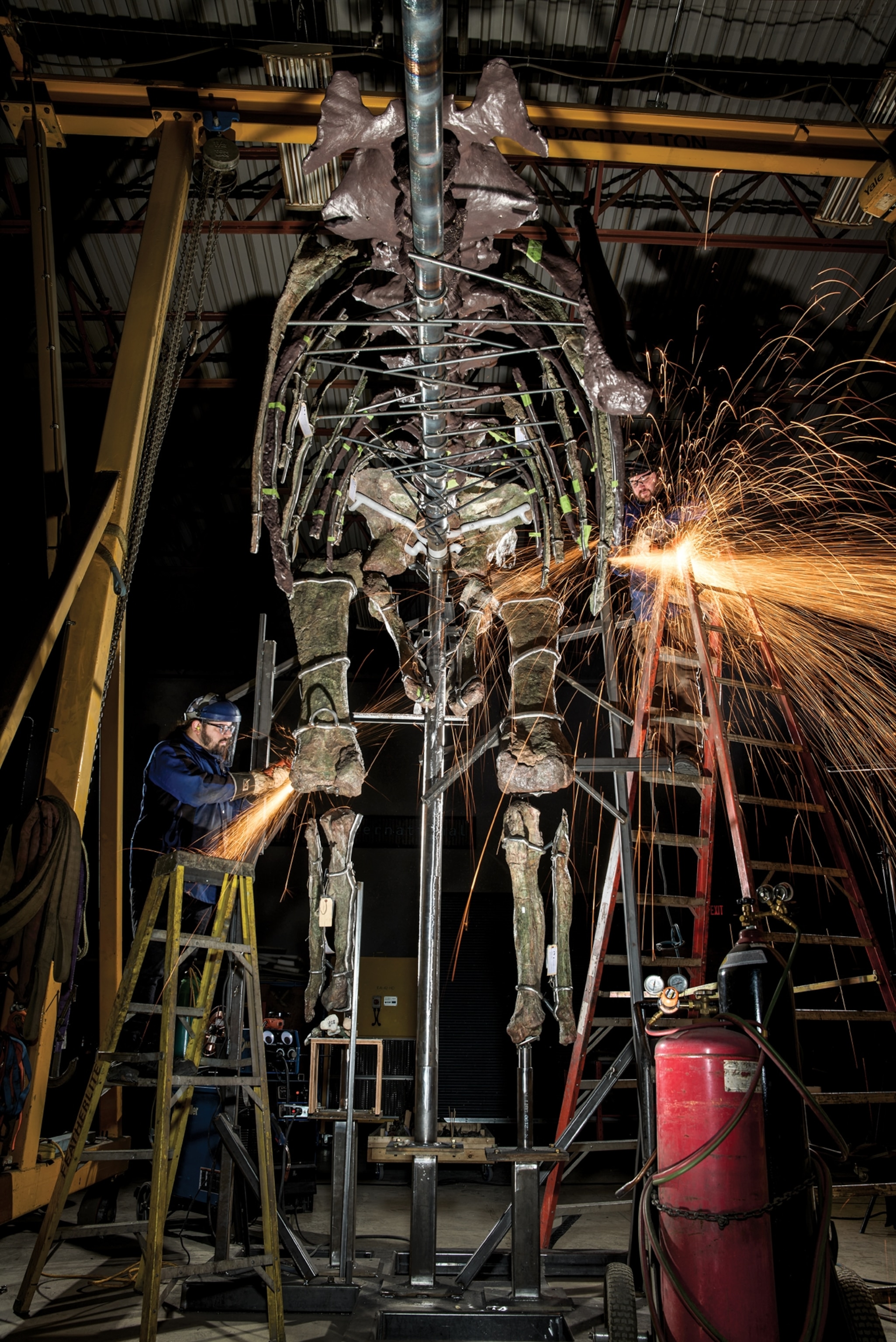

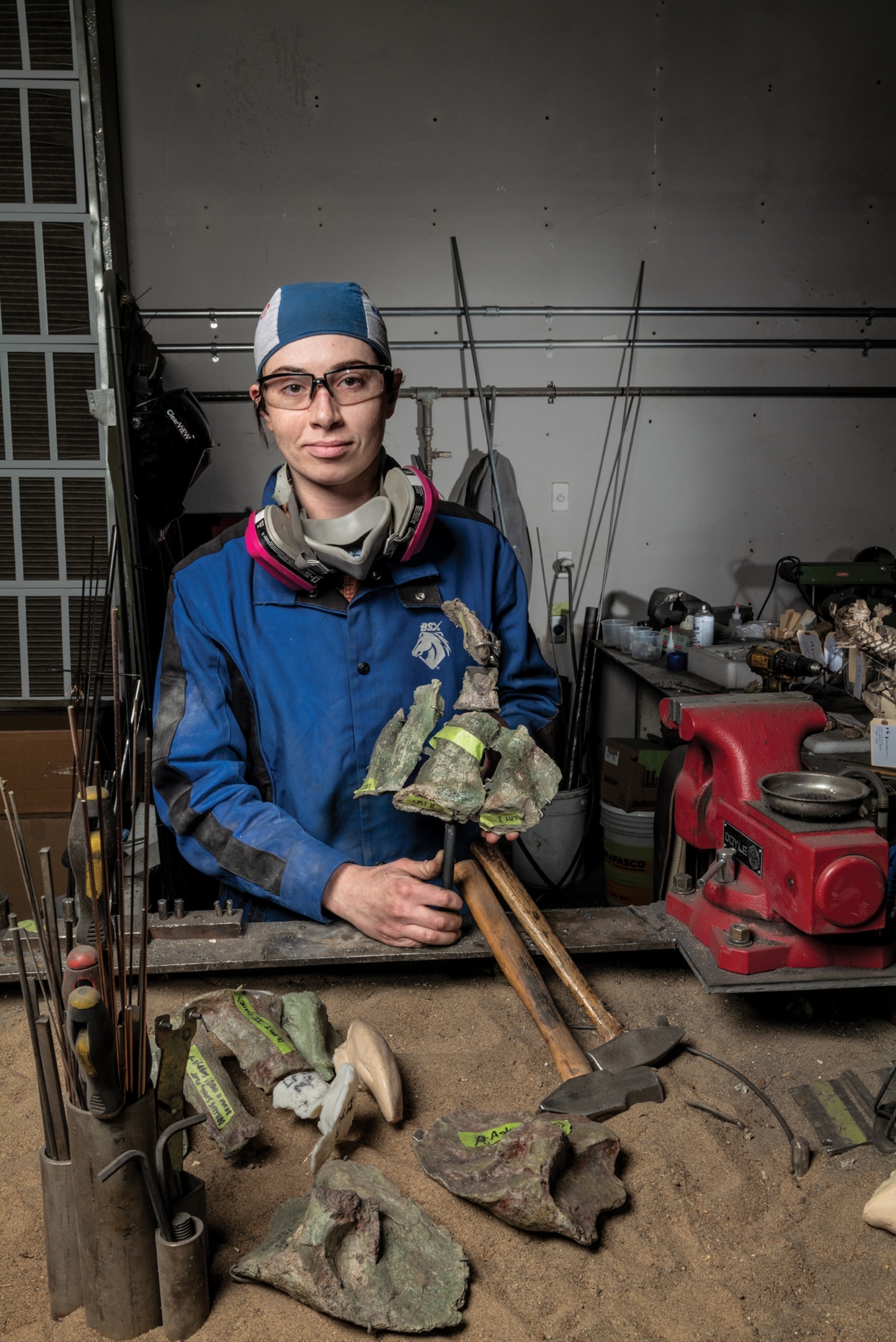
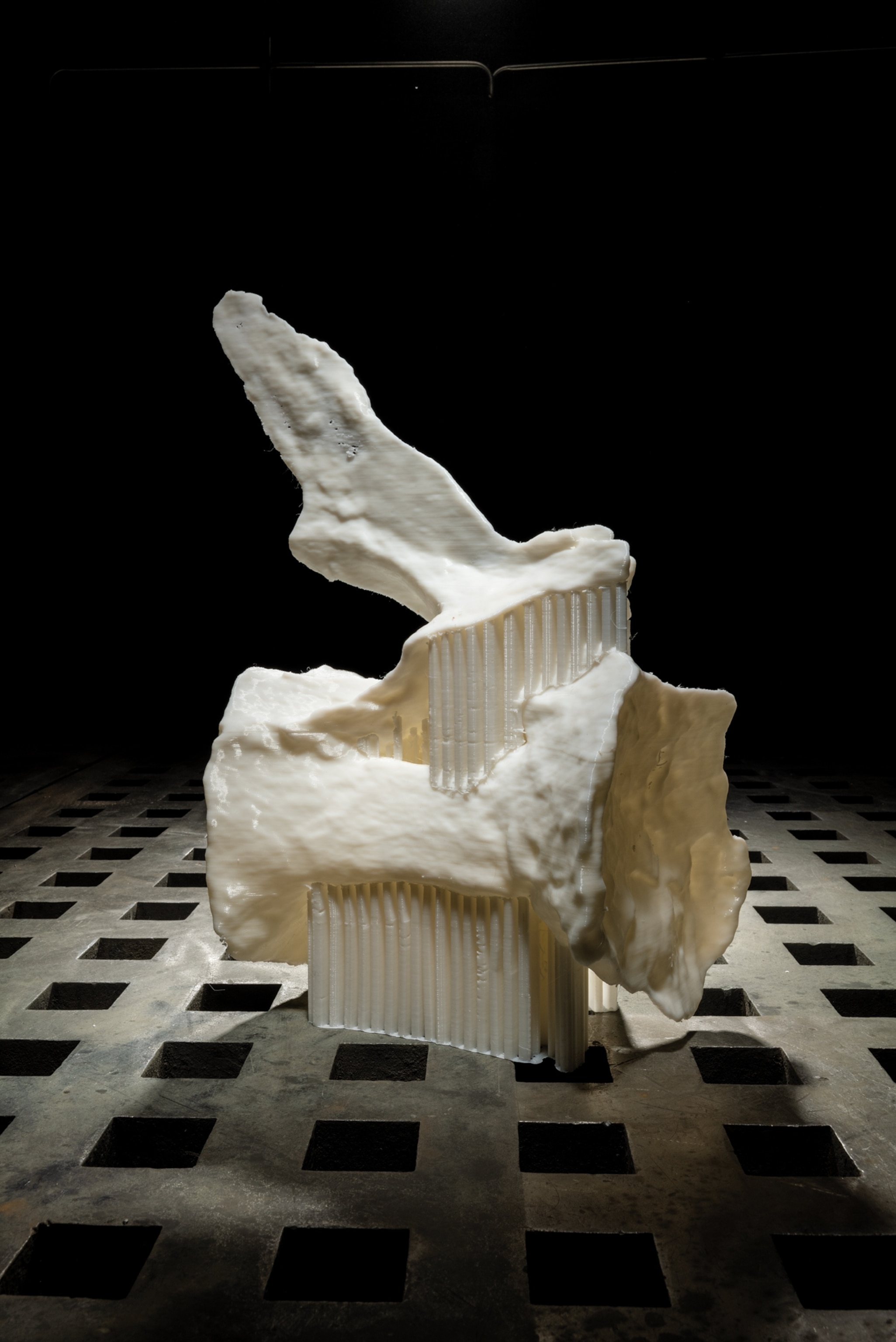
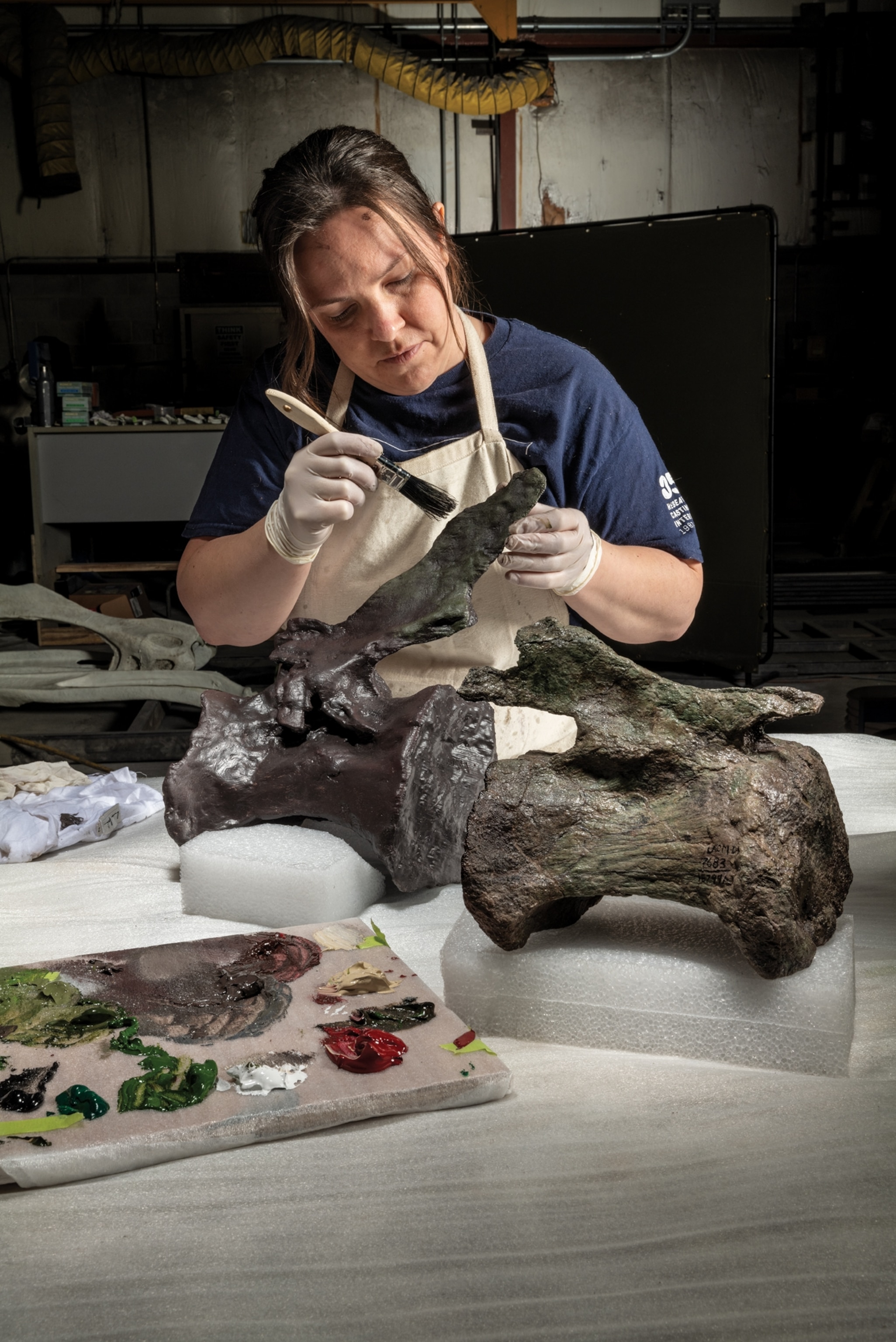
In a meeting room upstairs, staff from the museum and from RCI were working through details of the mount. It would measure about 75 feet long, on display in the grand entry hall of a new wing of the museum. But at the moment, it appeared that six feet of the head and neck would poke through a wall into the next room. They debated alternative positioning, but every move seemed to be constrained by architecture. Too far one way and the head might miss key ceiling anchor points. Too far the other and the tail would intrude on an emergency exit.
Despite what architects and designers imagined, the skeleton was “not just a model you can make go any way you want,” says paleontologist Luis Chiappe, director of the museum’s Dinosaur Institute, who served from the start as leader (and head chef) at the dig. But the challenge did not seem to leave anyone flustered, insuperable obstacles being standard in paleontology. Then someone announced, a little meekly, that different design software programs had been miscommunicating: The dinosaur’s head wouldn’t poke through the wall after all.
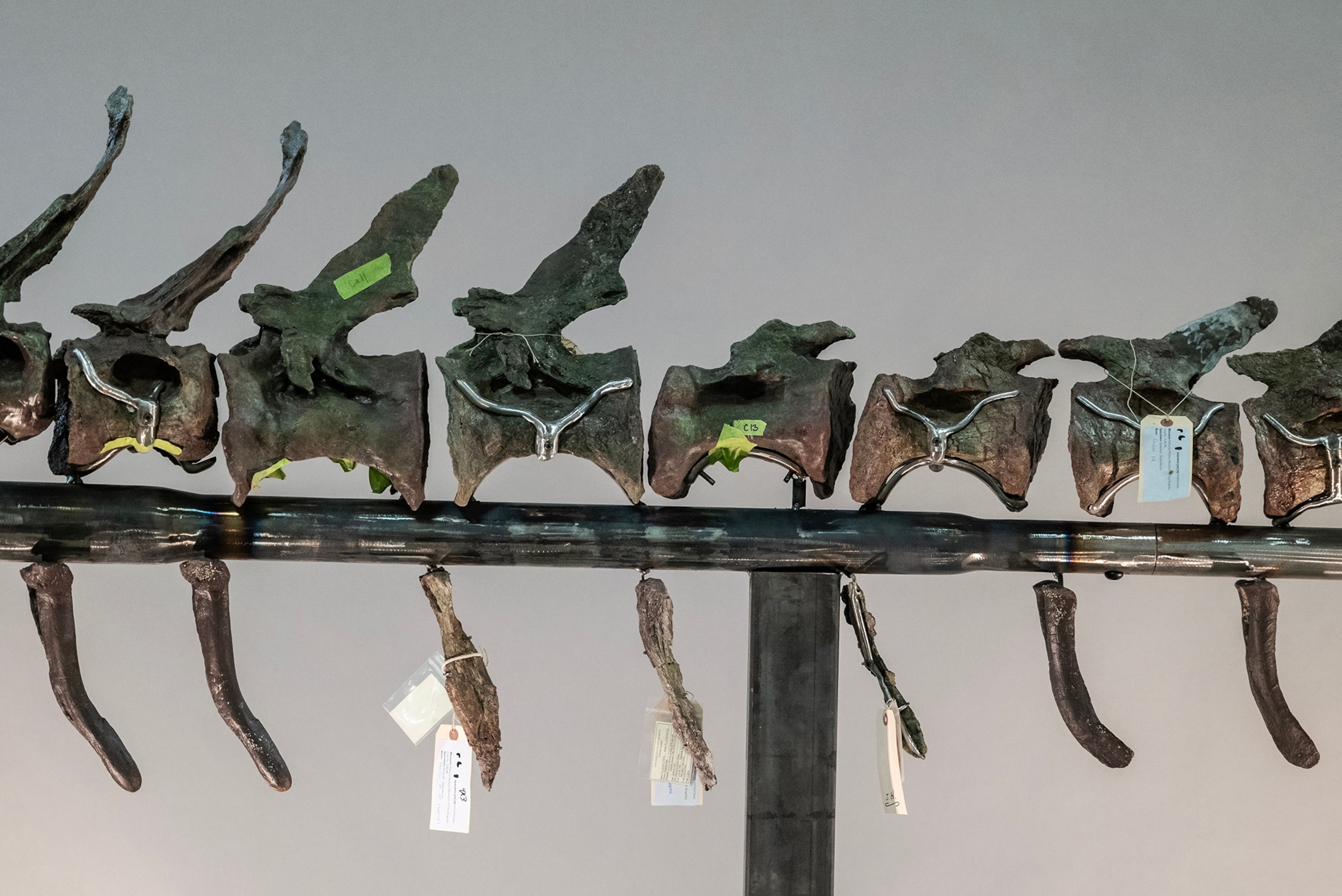
But there were plenty of real, rather than imagined, problems to solve. A large section of spine crushed and twisted during those 150 million years underground presented a major issue, for instance. Installed as is, it threatened to bend the spine in a way that would distort the entire mount. In the end, Chiappe opted to have RCI scan those vertebrae and produce uncrushed, 3D-printed substitutes for a more natural look. The real bones would be displayed below, as part of the exhibit’s message about the challenges of getting from dig to exhibition hall.
Step 4: mount for display
Thousands of decisions and many months later, the RCI team set to work mapping parts and building corresponding steel structures to support them. A thick-walled steel post for the pelvis and the back legs went up first. Then came a horizontal steel armature following the natural curve of the spine. The reconstruction took months of painstaking labor, and none of it was permanent. Instead, the sections of armature slid together, or apart, in a neat stub-and-socket system. Steel holders attached each bone to the larger structure more firmly than in the living animal—but in such a way that any bone, or all of them, could be removed for repair or research. It would take just a few turns with an Allen wrench, as if it were all an elaborate piece of ready-to-assemble household furniture.

When everything was complete, the bones and steel were disassembled, packed in shipping crates, and trucked back across the continent to Los Angeles. There, on a plinth specially designed for this moment, the parts are coming together, more quickly this time. Going on two decades since their first sighting, the dinosaurs blended in this mount are rising up into the exhibition space they will henceforth dominate. Gnatalie’s new life, as terror and teacher to our upstart species, is beginning at last.
Richard Conniff, a National Magazine Award winner, writes often about the natural world. His recent National Geographic articles cover pterosaurs and privately owned dinosaurs. He’s the author of House of Lost Worlds.
Craig Cutler spent almost five years documenting the reconstruction of a dinosaur. The top challenge? How to capture a beast twice as long as a bus. “The specimen was bigger than the space,” he says. “Both ends stuck out of the room.”
Related Topics
You May Also Like
Go Further
Animals
- What would the world look like without mosquitoes?What would the world look like without mosquitoes?
- Social media loves to villainize dolphins. Here's why it's wrong.Social media loves to villainize dolphins. Here's why it's wrong.
- How did wolves evolve into dogs? New fossils provide cluesHow did wolves evolve into dogs? New fossils provide clues
- This unorthodox method is saving baby parrots from extinctionThis unorthodox method is saving baby parrots from extinction
- A deadly disease that affects cats big and small found in U.S.A deadly disease that affects cats big and small found in U.S.
Environment
- ‘Corn sweat’—and other weird weather phenomena—explained‘Corn sweat’—and other weird weather phenomena—explained
- A sea tornado sank a yacht. We might see them more often.A sea tornado sank a yacht. We might see them more often.
- How billions of dollars are revolutionizing ocean explorationHow billions of dollars are revolutionizing ocean exploration
- Where to go stargazing in Chile according to a local astronomer
- Paid Content
Where to go stargazing in Chile according to a local astronomer
History & Culture
- Did Babe Ruth really ‘call’ this legendary home run?Did Babe Ruth really ‘call’ this legendary home run?
- The real history behind the legend of China's Monkey KingThe real history behind the legend of China's Monkey King
- How new technology transformed the American workforceHow new technology transformed the American workforce
- This secret Civil War sabotage mission was doomed from the startThis secret Civil War sabotage mission was doomed from the start
- This rare burial site reveals secrets about the Sahara's lush pastThis rare burial site reveals secrets about the Sahara's lush past
Science
- Why some say tennis is 'the world's healthiest sport'Why some say tennis is 'the world's healthiest sport'
- Your body ages rapidly at 44 and 60. Here's how to prepare.Your body ages rapidly at 44 and 60. Here's how to prepare.
- How do gold nuggets form? Earthquakes may be the keyHow do gold nuggets form? Earthquakes may be the key
- Astronauts getting stuck in space is more common than you thinkAstronauts getting stuck in space is more common than you think
Travel
- These are the must-see sights of Italy's Veneto regionThese are the must-see sights of Italy's Veneto region
- A guide to St John's, Atlantic Canada's iceberg capitalA guide to St John's, Atlantic Canada's iceberg capital
